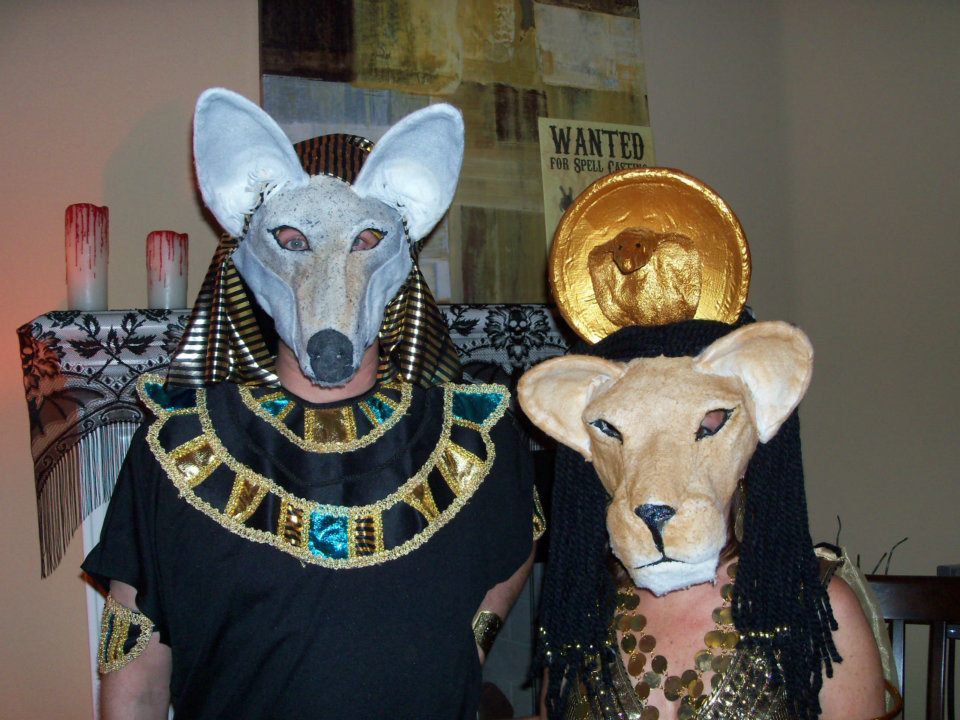These masks are an homage to two well-known Egyptian gods: warrior goddess Sekhmet, and god of the underworld, Anubis.
The warrior goddess, Sekhmet, has the head of a lioness and a crown of gold featuring the cobra and the Eye of Ra (the Sun god). Sekhmet has also been known as the Lady of Slaughter and the Mistress of Dread.
Anubus, also known as the god of mummification and the protector of the dead, has the head of a jackal. As two of the best-known Egyptian gods and goddesses, this pair seemed the obvious (and most recognizable) choice for our Halloween costumes this year.
The underlying structure of the masks is wire, mounted to baseball caps. They were then covered with felt and airbrushed with acrylics. Sekhmet features hair of thick yarn, while Anubus uses fabric to cover the back of the mask and hat.
As I am not a trained artist, the majority of the initial time was spent in trying to get the animal heads proportionally correct using clay models (maquettes). This will likely go more quickly for those with a background in art or sculpture.
The original intent for the construction of the masks was to be decidedly more high-tech. However, this was not a feasible approach and ultimately I settled for a tried and true, although much more labor-intensive, method.



